Last updated on
Discover the essential factors to consider when selecting the perfect kitchen backsplash, ensuring a harmonious blend of style and functionality for your cooking space.
The kitchen is the heart of any home, and it’s no secret that a well-designed kitchen can make all the difference in your daily routine. One element that can elevate the look of your kitchen is a backsplash.
Not only does it protect your walls from spills and splatters, but it also adds a pop of color or texture to your space. However, with so many options available, choosing the right backsplash for your kitchen can be overwhelming.
In this article, we’ll guide you through everything you need to know about choosing a kitchen backsplash that will complement your style and enhance the functionality of your space.
What's Inside
Assessing Your Kitchen Style
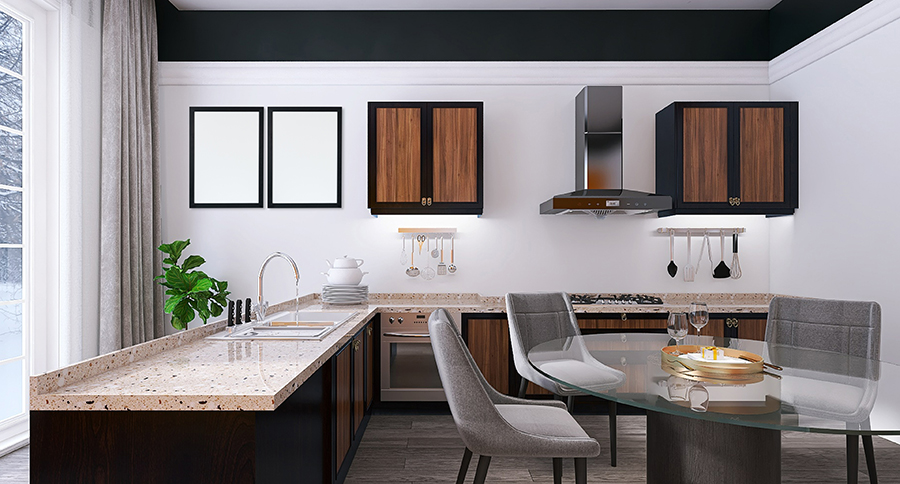
Before you start browsing through the endless options of backsplash materials and designs, it’s essential to assess your kitchen style. The backsplash should complement the overall aesthetic of your kitchen rather than clash with it.
If you have a modern or contemporary kitchen, consider sleek and simple tiles in neutral colors like white or gray. For a traditional-style kitchen, opt for classic subway tiles in soft hues such as beige or cream.
If you’re unsure about what style category your cooking space falls into, take some time to evaluate its features carefully. Look at the cabinets’ color and design; are they ornate with intricate details? Or do they feature clean lines without any embellishments? Consider also other elements such as countertops material (granite vs quartz), flooring type (hardwood vs tile), lighting fixtures (pendant lights vs recessed lights) among others.
Determine Your Budget

Backsplashes come in a wide range of materials, sizes, and styles with varying price points. It’s essential to set a realistic budget before making any purchases or decisions.
Consider how much you’re willing to spend on both materials and installation costs. Keep in mind that some types of backsplashes require professional installation while others can be DIY projects.
When setting your budget, also consider any additional expenses such as tools needed for installation or potential repairs down the line.
Material Options for Backsplash
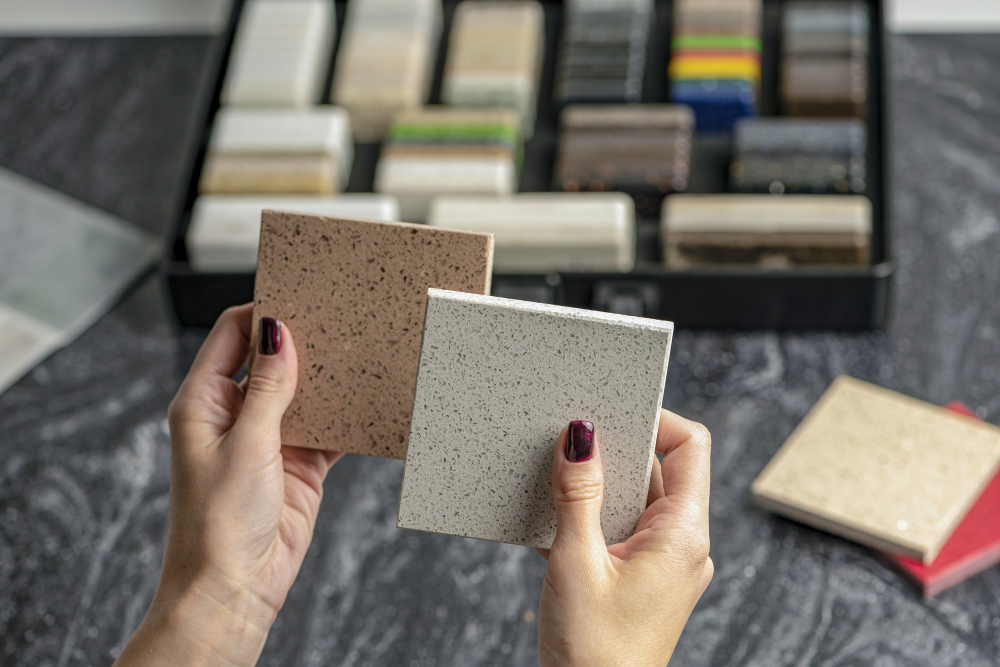
Each material has its unique characteristics and benefits that can enhance the look of your space while providing practicality.
Ceramic tiles are a popular choice for their durability, versatility, and affordability. They come in various sizes, shapes, colors and patterns that can complement any kitchen style from traditional to modern.
Glass tiles offer a sleek and contemporary look with their reflective surface that adds depth to small kitchens. They’re easy to clean but require careful handling during installation due to their fragility.
Natural stone such as marble or granite is an elegant option for those who want a luxurious feel in their cooking space. However, they require regular maintenance due to being porous materials susceptible to staining if not sealed correctly.
Metallic finishes like stainless steel or copper add an industrial vibe perfect for modern kitchens with minimalist designs. These materials are durable but prone to scratches over time which may affect its aesthetic appeal.
Choosing the Right Color Palette
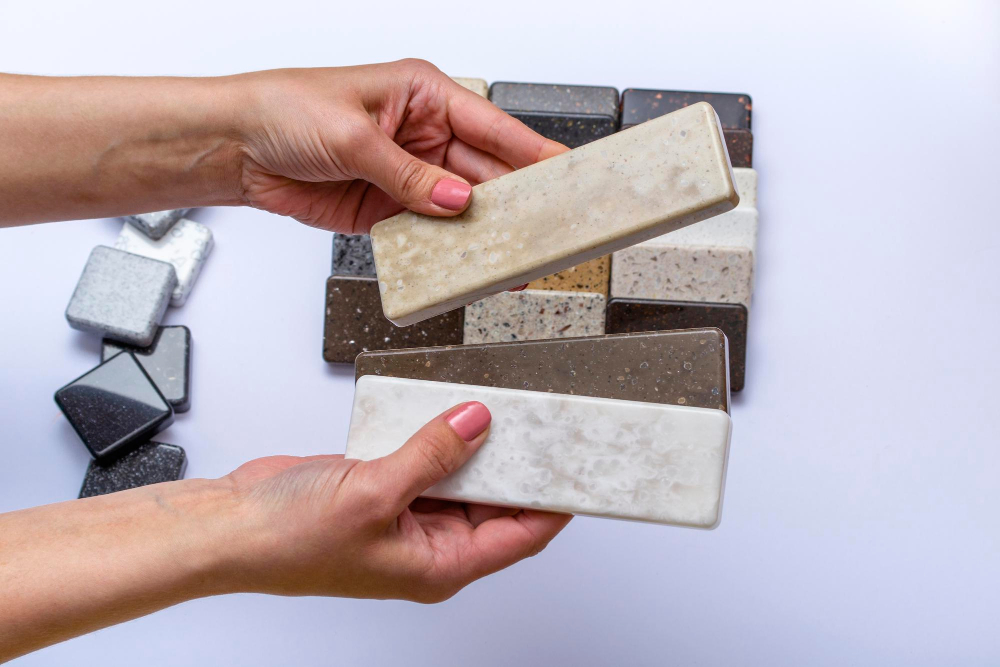
First and foremost, you want to choose colors that complement your existing kitchen decor. If you have neutral cabinets and countertops, adding a pop of color with your backsplash can create visual interest without overwhelming the space.
Another consideration is the size of your kitchen. If you have a small or dark space, lighter-colored tiles can help brighten up the room and make it feel more spacious.
On the other hand, if you have an open-concept kitchen with plenty of natural light pouring in from windows or skylights, darker tiles may be more suitable.
It’s also important to think about how long-lasting certain colors will be in terms of trends versus timeless appeal. While bold patterns or trendy hues might seem appealing at first glance but could quickly become outdated over time.
Finding the Perfect Tile Size

The first thing you need to think about is the size of your kitchen. If you have a small kitchen, larger tiles may overwhelm the space and make it feel even smaller.
In this case, smaller tiles or mosaic patterns can be an excellent option as they create an illusion of more space.
On the other hand, if you have a large kitchen with high ceilings and ample counter space, larger tiles can help balance out proportions and add visual interest without overwhelming the room’s design.
Another factor that affects tile size selection is personal preference. Some people prefer uniformity in their backsplash design while others like mixing different sizes for added texture and depth.
Mixing and Matching Patterns
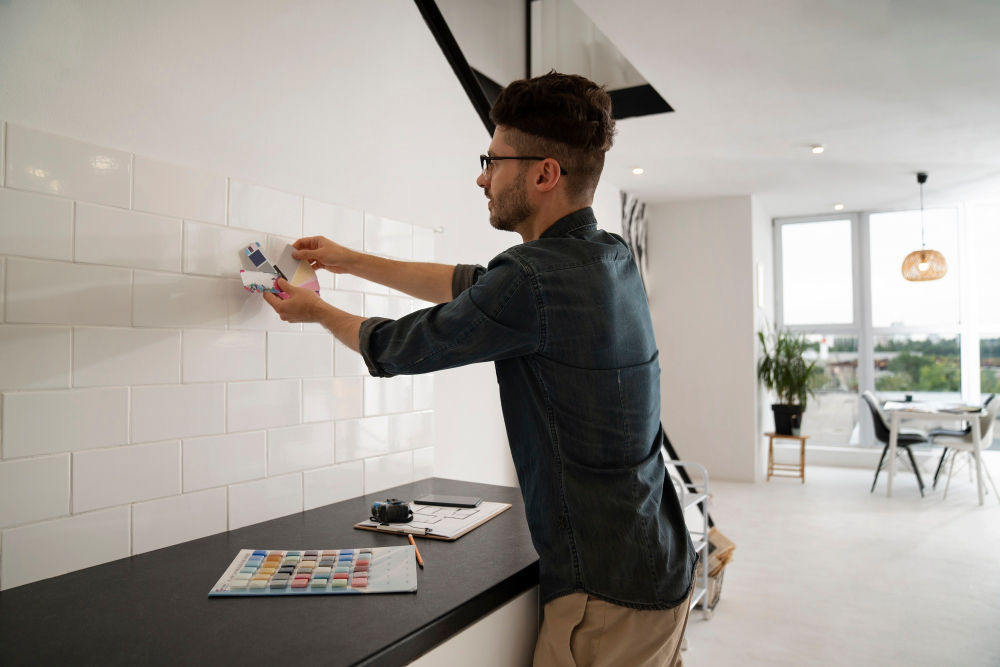
It can be tricky if not done correctly. The key is finding the right balance between different patterns without overwhelming the space.
One approach is choosing one dominant pattern for your backsplash and then selecting complementary tiles with smaller-scale designs or solid colors that match the dominant pattern’s color scheme. For example, if you have a bold geometric tile as your primary design element, consider pairing it with simple subway tiles in coordinating hues.
Another option is using different materials but keeping them within a similar color palette or texture family. This technique creates visual interest while maintaining cohesiveness throughout the space.
Considerations for Kitchen Layout
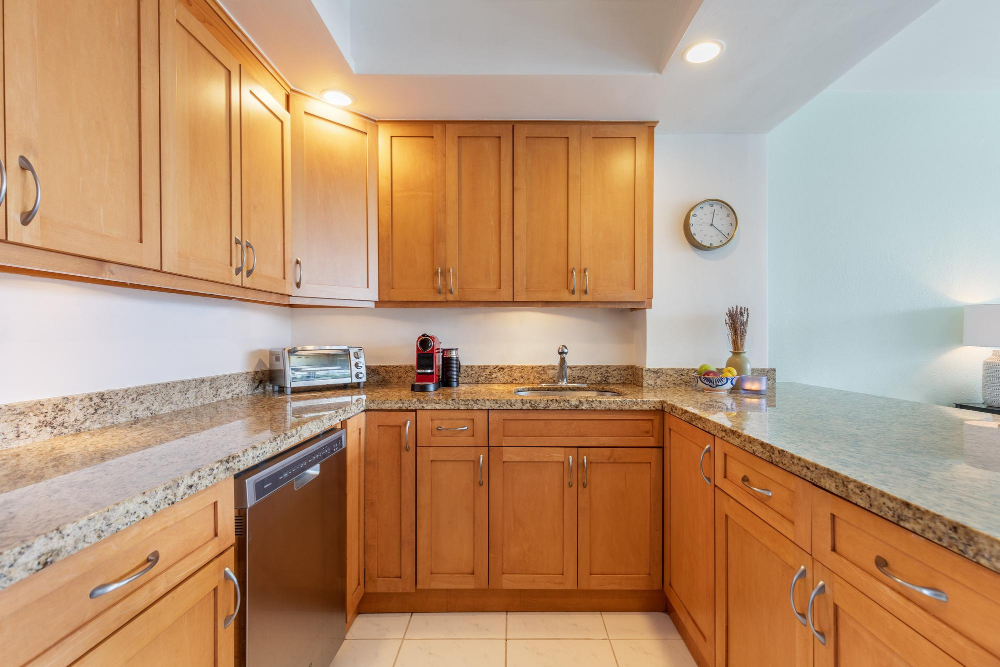
The backsplash should complement and enhance the overall design of your space while also serving its functional purpose. For example, if you have a small kitchen with limited counter space, you may want to choose a lighter-colored tile that reflects light and makes the room feel more spacious.
On the other hand, if you have an open-concept kitchen with high ceilings and ample natural light, you can experiment with bolder colors or patterns for your backsplash without overwhelming the space. Consider how much wall area needs coverage based on where cabinets are located in relation to countertops.
Another important factor is whether there are any focal points in your kitchen that could benefit from accent tiles or unique designs such as behind range hoods or above sinks.
Environmental Impact and Sustainability

Many materials used for backsplashes can have negative environmental impacts during production or disposal. For example, some tiles are made from non-renewable resources like natural stone or require high energy consumption in their manufacturing process.
To minimize your carbon footprint, opt for eco-friendly materials such as recycled glass tiles or ceramic tiles made from sustainable sources. These options not only reduce waste but also add unique textures and colors to your kitchen design.
Another way to promote sustainability is by selecting local suppliers who use environmentally friendly practices in their production processes. This reduces transportation emissions while supporting local businesses that prioritize ethical sourcing and fair labor practices.
Grout Selection Guide
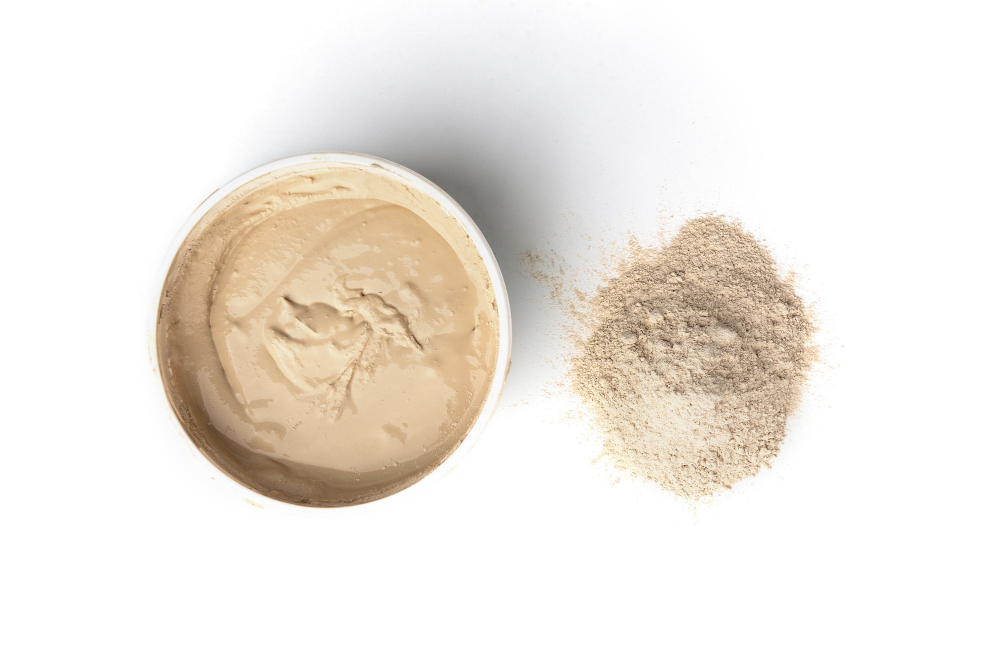
Grout is the material that fills in between tiles and helps keep them in place. It also plays an important role in protecting your walls from moisture and stains.
Firstly, you need to decide on the color of grout that will best complement your tile choice. You can either choose a matching or contrasting color depending on what look you’re going for.
Secondly, consider whether you want sanded or unsanded grout. Sanded grouts are ideal for larger gaps between tiles while unsanded ones work better with smaller gaps.
Thirdly, think about whether you want epoxy or cement-based grouts. Epoxy is more durable and resistant to stains but can be harder to apply than cement-based options which require sealing after installation.
Lastly, make sure that whichever type of grout you choose matches up with any environmental concerns such as being eco-friendly if sustainability is important to you.
Installation Techniques and Tools
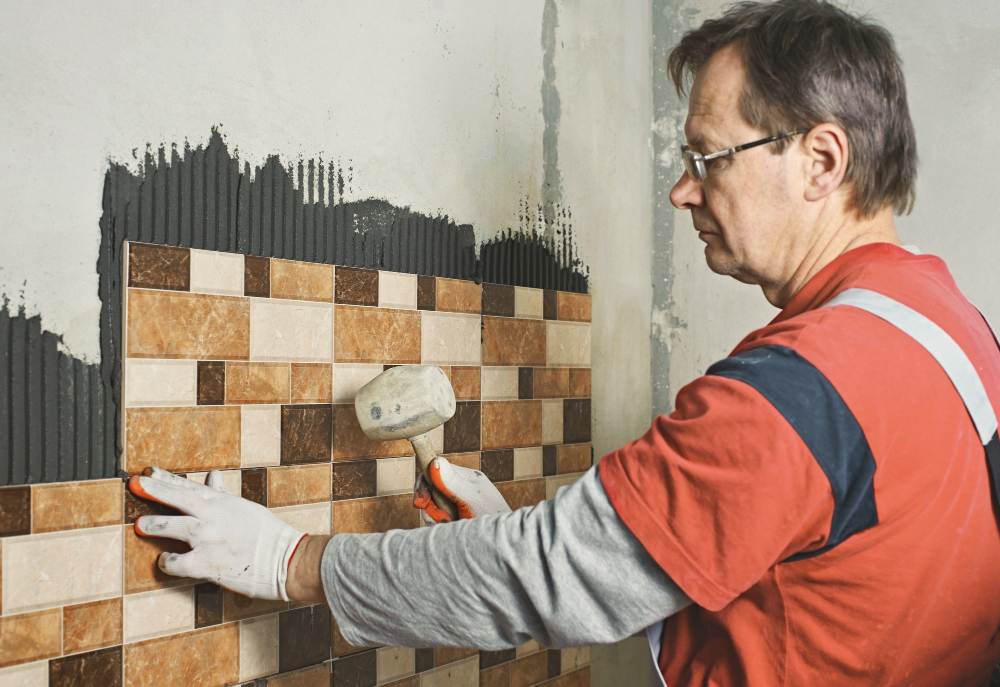
While some homeowners opt to hire a professional installer, many choose to tackle this project themselves. If you’re planning on installing your own backsplash, there are several techniques and tools that can make the process easier.
One of the most important things you’ll need is a tile cutter or wet saw. These tools will allow you to cut tiles into smaller pieces as needed for corners and edges.
You’ll also need adhesive mortar or mastic glue depending on what type of material your backsplash is made from.
Before starting any installation work, ensure that all surfaces are clean and dry so that adhesives bond properly with walls or existing tiles if applicable.
Another essential tool is a leveler which helps ensure straight lines during installation; this will prevent crooked rows of tiles which could ruin an otherwise beautiful design.
Don’t forget about grout! This material fills in gaps between each tile piece after they have been installed onto their respective surface areas – giving them added stability while also providing aesthetic appeal by creating contrast against adjacent colors/textures within patterns/designs used throughout space.
Care and Maintenance Tips
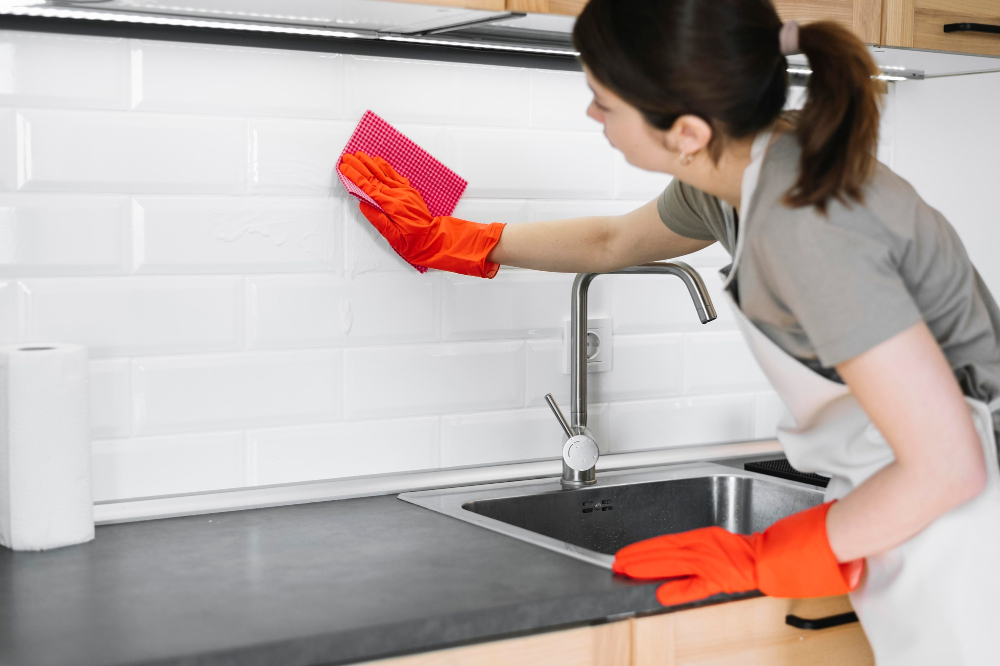
Regular cleaning and maintenance will help preserve the beauty of your backsplash for years to come. Here are some care and maintenance tips to consider:
- Wipe down your backsplash regularly with a damp cloth or sponge.
- Avoid using abrasive cleaners that can scratch or damage the surface.
- For tough stains, use a non-abrasive cleaner specifically designed for your type of material.
- Seal porous materials like natural stone periodically to prevent staining from spills and splatters.
- Be careful when placing heavy objects on shelves above tile backsplashes as they may crack under pressure.
Wall Preparation Essentials

This step is essential for ensuring that your backsplash adheres correctly and lasts for years to come. The first thing you need to do is clean the walls thoroughly with soap and water or a degreaser solution if there are any grease stains on them.
Next, inspect the walls carefully for any cracks or holes that may require patching up before installation. Use spackle or joint compound to fill in these imperfections and let them dry completely before sanding down until smooth.
If you’re planning on tiling over existing tiles, make sure they’re firmly attached by tapping each tile gently with a hammer handle; if they sound hollow, remove those tiles as well as any loose grout around them.
Wipe down all surfaces again with a damp cloth after sanding so that no dust remains on your freshly prepared wall surface.
Planning for Outlets and Switches

These elements are necessary but can disrupt the flow of your backsplash design if not taken into account early on in the planning process.
Before selecting a tile size or pattern, take note of where your outlets and switches are located. If possible, try to position them in areas that won’t interfere with the overall look you’re trying to achieve with your backsplash.
If moving an outlet or switch isn’t feasible, there are ways to work around them creatively. For example, you could choose a tile shape that allows for easy cutting around these obstacles without disrupting its pattern.
Another option is installing an under-cabinet power strip instead of traditional wall-mounted outlets. This solution provides convenient access while keeping unsightly cords hidden from view behind cabinets.
Peel-and-Stick Backsplash Options
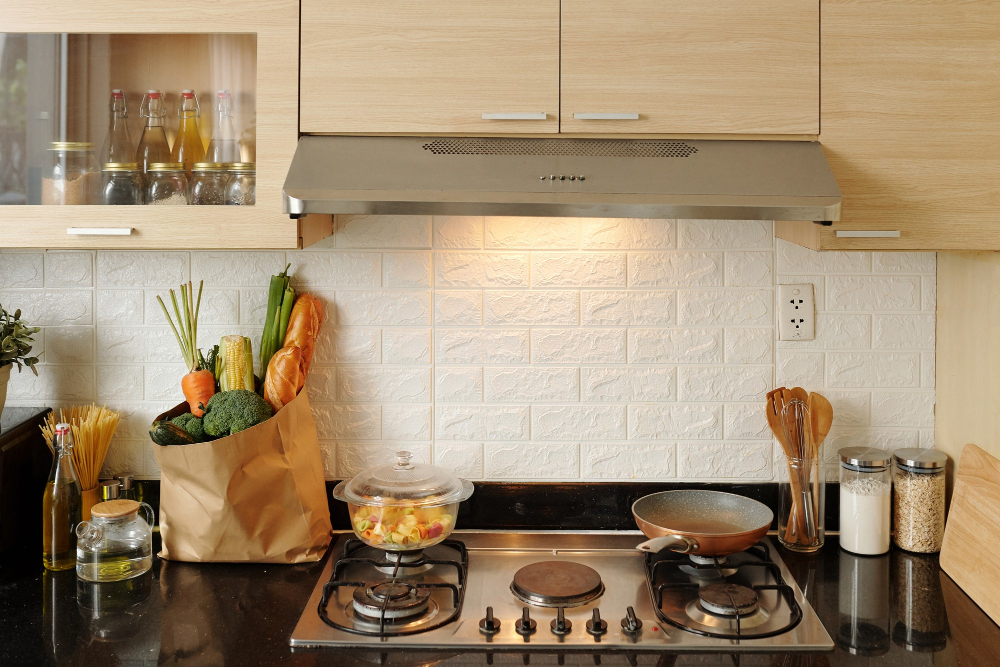
These self-adhesive tiles come in various colors, patterns, and textures that can mimic the look of real ceramic or glass tiles. They are easy to install and require no special tools or skills.
One advantage of peel-and-stick backsplashes is that they can be easily removed without damaging your walls if you decide to change your decor later on. However, keep in mind that these types of backsplashes may not last as long as traditional ones and may not withstand heavy use or exposure to moisture.
When choosing peel-and-stick backsplash options, consider the color scheme and style you want for your kitchen. You can opt for classic subway tiles or go bold with geometric shapes or metallic finishes.
Some popular brands include Smart Tiles, Tic Tac Tiles, Art3d Peel & Stick Tiles among others.
Trending Backsplash Ideas

One popular trend is using large-format tiles that create a seamless look and make cleaning easier. Another trend is mixing and matching different materials like glass, metal, or stone for an eclectic yet cohesive design.
Subway tiles have been around for over 100 years but are still going strong as one of the most popular backsplash options today. They come in various sizes and colors, making them versatile enough to fit any style preference.
For those who want something more unique than traditional subway tiles but still crave simplicity in their design can opt for hexagonal-shaped tiles or elongated rectangles instead.
Geometric patterns are also gaining popularity as they add visual interest without being too overwhelming. You can choose from honeycomb shapes or diamond patterns that will give your kitchen an edgy vibe while maintaining its elegance.
Incorporating metallic accents into your backsplash design is another way to stay on-trend this year; copper tones bring warmth while silver hues provide a sleek finish perfect for contemporary kitchens.
Customizing Your Backsplash Design
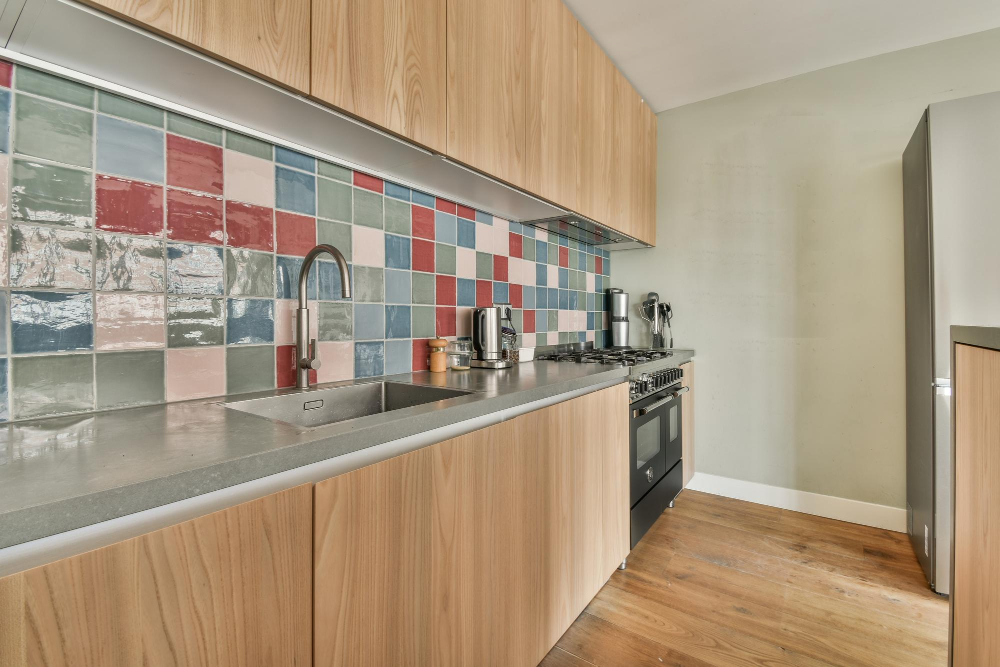
Customizing your backsplash design allows you to create a one-of-a-kind look that reflects your personality and style. You can choose from various materials such as glass, metal, or stone tiles in different shapes and sizes.
One popular trend in customizing backsplashes is creating a mural or pattern using tiles of different colors. This technique adds depth and dimensionality while also making the space feel more cohesive.
Another option for customization is incorporating accent pieces into the design. For example, adding metallic accents like copper or brass can give an industrial vibe while colorful mosaic patterns add vibrancy.
Extend Tile Up to Ceiling
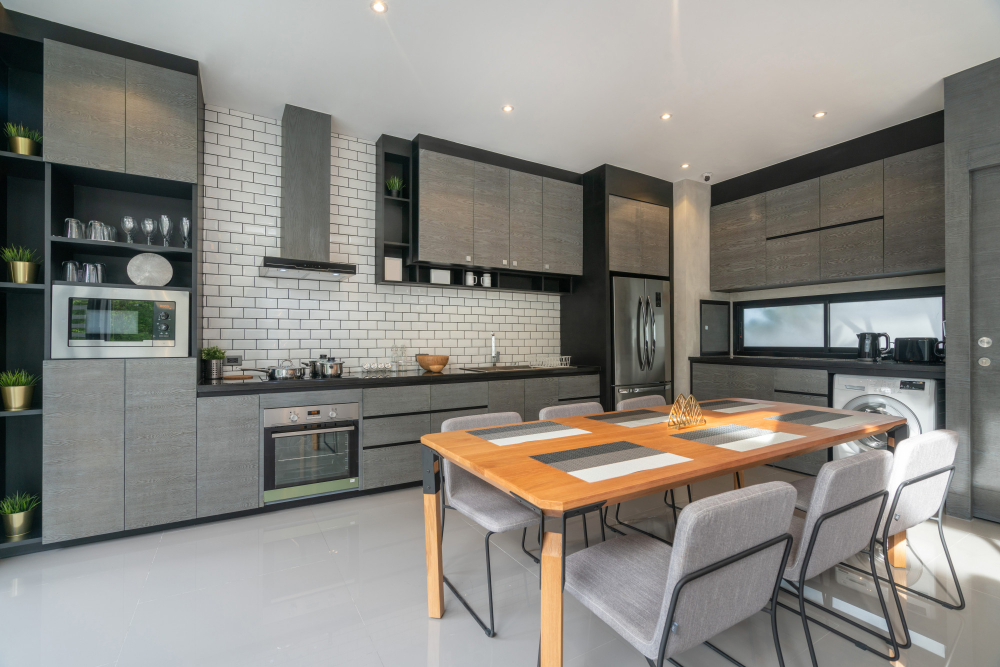
This technique can make your space appear larger, add visual interest, and provide an opportunity for creative expression. It’s also practical as it eliminates the need for painting or wallpapering above the cabinets.
When extending tile up to the ceiling, consider using smaller tiles or mosaics that will fit well in tight spaces. You may also want to choose a neutral color palette that complements other elements of your kitchen design.
If you’re feeling adventurous, try incorporating accent tiles into this area for added texture and dimension. For example, you could use metallic accents or glass tiles with unique patterns.
Keep in mind that extending tile all the way up can be more expensive than traditional backsplash installation due to additional materials needed and labor costs associated with working at heights.
Timeless Over Trendy
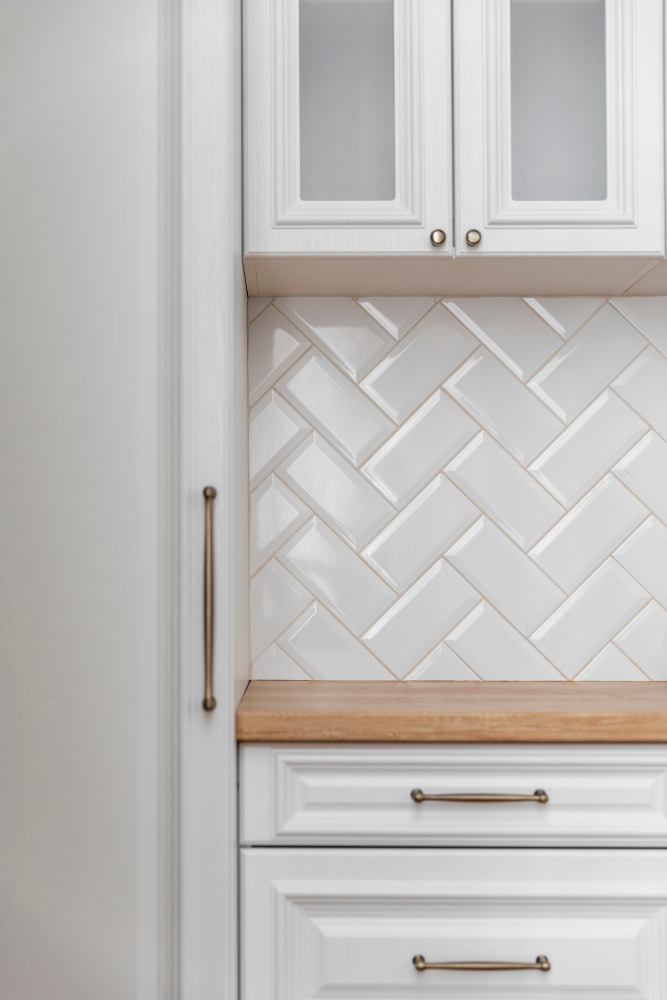
While trendy patterns and colors may seem appealing at first, they can quickly become outdated and leave you with a dated-looking kitchen. Instead of following fleeting trends, opt for timeless designs that will stand the test of time.
Neutral tones like white or beige are classic options that never go out of style. They provide an excellent backdrop for other elements in your kitchen while creating a clean and fresh look.
Subway tiles are another timeless option that has been popular since their introduction in New York City subway stations over 100 years ago.
If you want to add some personality without sacrificing timelessness, consider adding accents through colorful grout or unique tile shapes instead of bold patterns or bright colors.
Consider Eco-friendly Backsplashes
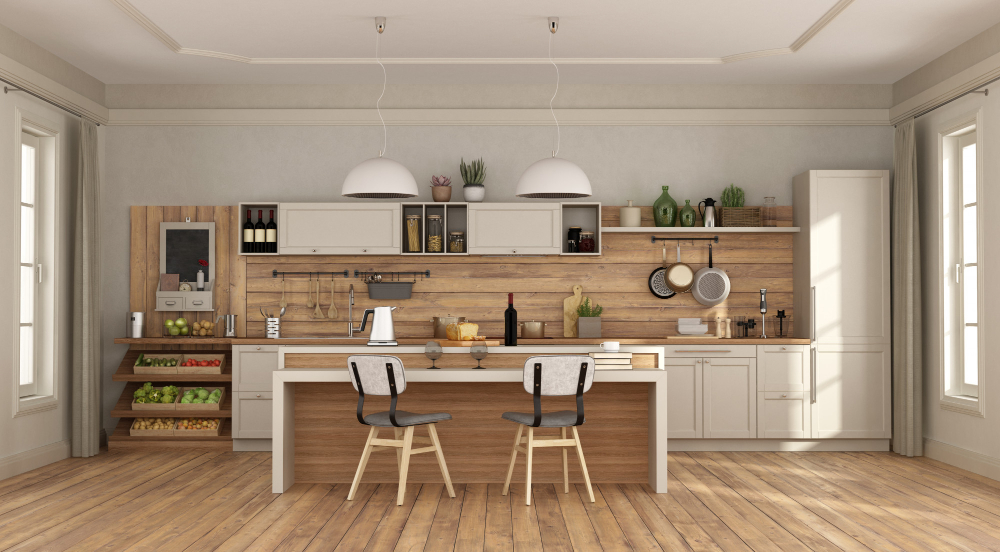
Eco-friendly backsplashes are becoming increasingly popular as people become more conscious of their carbon footprint and strive to make sustainable choices in their homes.
One option for an eco-friendly backsplash is recycled glass tiles. These tiles are made from post-consumer waste such as old bottles and windows, which reduces landfill waste while creating a beautiful and unique look for your kitchen.
Another option is using natural materials like stone or wood that have been sustainably sourced. These materials not only add warmth and texture to your space but also reduce the use of synthetic products that can harm the environment during production.
Lastly, you can opt for non-toxic paint or wallpaper instead of traditional tile options. This alternative will give you endless design possibilities while reducing material consumption altogether.
Accentuate With Accents
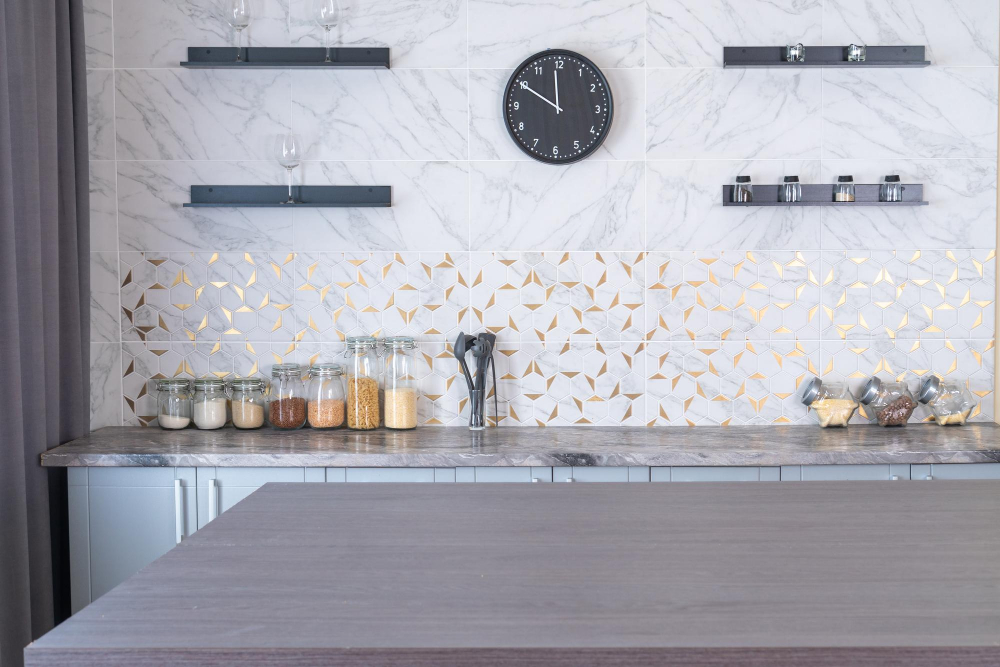
Adding a few well-placed accent tiles or mosaics can create a focal point and add visual interest to your space. Accents come in various shapes, sizes, colors, and materials that you can mix and match with your primary tile selection.
For instance, if you have chosen subway tiles for your backsplash but want to add some personality without going overboard on color or pattern variation – consider adding an accent strip of glass mosaic tiles above the stove area. This will draw attention to this part of the kitchen while still keeping things cohesive.
Another way is by using metallic accents like copper or brass inserts within neutral-colored ceramic tile designs; these metals are perfect for creating warmth in modern kitchens with stainless steel appliances.
Don’t be afraid to experiment with different types of accents when designing your kitchen backsplash! They’re an easy way to inject personality into any space while maintaining functionality at its core.
FAQ
Should backsplash be lighter or darker than cabinets?
Ideally, a backsplash should be the opposite shade of your cabinets and countertops, meaning lighter cabinets and countertops should have a darker backsplash, while darker cabinets and countertops should have a lighter backsplash for visual interest and balance.
What is the best color for a kitchen backsplash?
The best color for a kitchen backsplash is white, as it is a safe option that works well with both traditional and modern kitchens, pairs with any countertop, and is easy to clean and maintain.
What is the best type of kitchen backsplash?
The best type of kitchen backsplash consists of ceramic, porcelain, glass, and metal tiles due to their nonporous nature, resistance to stains, fading, discoloration, heat, and moisture, resulting in superior functionality.
How do you determine the right material for your kitchen backsplash?
To determine the right material for your kitchen backsplash, consider factors such as budget, style, maintenance, and durability, then choose a material that best fits your needs and preferences.
What are the key factors to consider for ease of maintenance in selecting a kitchen backsplash?
Key factors to consider for ease of maintenance in selecting a kitchen backsplash include material, durability, stain resistance, and simplicity of cleaning process.
How do kitchen layout and size influence the choice of backsplash design?
Kitchen layout and size influence the choice of backsplash design as they determine the visual impact, style, and spatial constraints for a harmonious and functional aesthetic.





